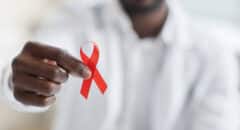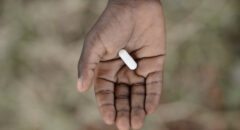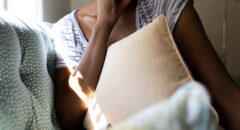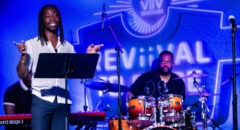
HIV/AIDS continues to disproportionately affect Black Americans, despite overall progress in reducing infection rates. While Black individuals make up approximately 12 percent of the U.S. population, they account for nearly 39 percent of new HIV diagnoses, making them seven to eight times more likely to be diagnosed with HIV than white individuals.
To better understand these disparities and what individuals can do to protect themselves, BlackDoctor.org spoke with Dr. Natasha Bhuyan, a national medical director at One Medical and a family physician based in Phoenix, Arizona. She offers critical insights into the barriers to care and practical steps for HIV prevention.
Why Do HIV Disparities Exist?
Several systemic and social factors contribute to the higher HIV rates in Black and marginalized communities:
1. Barriers to Healthcare and PrEP Access
PrEP (pre-exposure prophylaxis) is a highly effective medication that prevents HIV transmission. However, access remains a challenge due to:
- Lack of awareness – Many people, including healthcare providers, don’t know about PrEP or how to access it.
- Limited access to providers – Some individuals don’t have a primary care doctor who prescribes PrEP.
- Cost and insurance gaps – While some insurance plans cover PrEP, out-of-pocket costs can be high.
“It’s crucial to raise awareness in communities about how HIV is transmitted and what steps can be taken to reduce risk. Beyond medications like PrEP, we need to educate people about all available prevention strategies,” Dr. Bhuyan says.
2. Socioeconomic Challenges
Many people face obstacles such as poverty, housing instability, and lack of reliable transportation, making it difficult to seek routine medical care and stick to prevention or treatment plans.
3. Stigma and Misinformation
Fear, stigma, and misinformation about HIV and sexual health prevent people from getting tested, discussing prevention options, and seeking treatment.
“For some people, the stigma around HIV creates a fear of being tested, so they may avoid getting an HIV test or even a routine screening for sexually transmitted infections (STIs),” Dr. Bhuyan explains. “That’s why it’s crucial to educate people about sexual health and safe sex practices.”
RELATED: Are HIV Infections Exploding Among Black Women?
What You Can Do to Protect Yourself
Dr. Bhuyan emphasizes that knowledge is power when it comes to HIV prevention. Here’s what you can do:
1. Get Tested Regularly
- Routine HIV testing is crucial. The CDC recommends at least one test for everyone aged 13-64 and more frequent testing for those at higher risk.
- Many clinics and health centers offer free or low-cost testing—check local resources.
2. Consider PrEP for HIV Prevention
- PrEP is over 99% effective when taken correctly.
- If you think PrEP might be right for you, talk to a trusted doctor or visit a local clinic to learn how to access it.
3. Use Protection During Sex
- Condoms and dental dams lower the risk of HIV and other STIs.
- Talking openly with partners about testing and prevention helps reduce stigma.
4. Establish a Trusted Healthcare Relationship
- Having a doctor you trust makes it easier to discuss sexual health, get tested, and access prevention methods like PrEP.
- If you don’t have a primary care doctor, community clinics and telehealth services can help.
“One of the things I always tell people is the importance of establishing a relationship with a trusted healthcare provider. Many people don’t know where to get reliable health information, especially with the flood of misinformation online,” Dr. Bhuyan says. “Social media, in particular, is full of misleading or false claims. So, people need to know where to find medically accurate, trustworthy sources of information.”
5. Learn and Share Accurate Information
- Get information from trusted medical sources like:
- Centers for Disease Control and Prevention (CDC)
- Local health departments
- Community health organizations
Share accurate information with family and friends to help break down the stigma.
Addressing Mistrust and Improving Healthcare Access
Medical mistrust is a real concern, but there are ways to navigate the system and advocate for your health:
1. Seek Culturally Competent Care
- Look for healthcare providers who respect your background and concerns.
- Many community clinics and LGBTQ+ health centers offer inclusive, stigma-free care.
2. Ask Questions and Speak Up
When meeting with a doctor, ask:
- “Do you prescribe PrEP?”
- “How often should I get tested for HIV?”
- “What are my affordable prevention options?”
3. Utilize Community Resources
- Many churches, LGBTQ+ centers, and community organizations offer free HIV testing, education, and support groups.
- Community health workers can help navigate insurance, schedule appointments, and connect you with the right providers.
“We can’t assume that simply sending a doctor into a community of color will automatically establish trust. Building relationships takes time, consistency, and a real commitment to addressing systemic issues,” Dr. Bhuyan adds.
RELATED: Living with HIV: 6 Unexpected Challenges Black Patients Face
Shifting the Narrative Around HIV/AIDS
How we talk about HIV/AIDS matters. Dr. Bhuyan emphasizes the importance of using respectful, inclusive language to help people feel comfortable seeking care.
- Instead of saying:
“HIV-infected person”
Say:
“Person living with HIV” - Instead of assuming sexual identity, focus on behavior:
“Are you gay or straight?”
Say:
“What body parts do you use during sex?”
“When we use stigmatizing language, it creates barriers between people and can erode trust. That’s why, when I talk to my patients, I ask questions like, ‘What body parts do you use during sex?’ rather than assuming an identity label,” Dr. Bhuyan explains. “Being clear and direct can help remove stigma.”
Final Thoughts: Take Control of Your Health
Despite progress, HIV disparities persist—but you can take steps to protect yourself and your community:
- Get tested regularly
- Talk to a doctor about PrEP
- Use protection during sex
- Find a doctor you trust
- Educate yourself and others
“In the U.S., only about 20 percent of adults get an annual wellness checkup, which is concerning,” Dr. Bhuyan notes. “So, how do we encourage people to take better care of themselves and prioritize their health? One way is by investing in areas beyond healthcare—such as early childhood education, adolescent education, and comprehensive sex education in schools.”
If you or someone you know needs support, reach out to local clinics, LGBTQ+ organizations, or online health resources for confidential, evidence-based care.
By taking these steps, we can empower individuals, strengthen communities, and work toward a future where HIV/AIDS no longer disproportionately affects communities of color.








